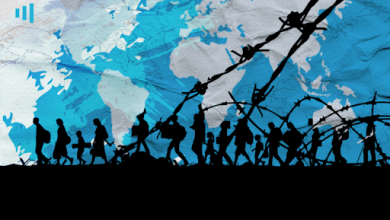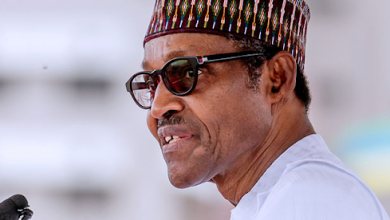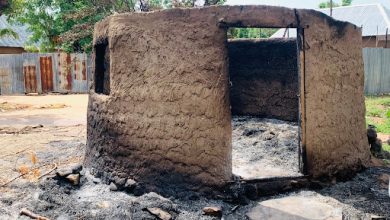Military Operation In Nigeria’s Northeast Intensifies
Over the past weeks, the Nigerian military has begun intensifying combat and clearing patrols.

Counterinsurgency operations in Nigeria’s northeast region are gathering steam as the military shifts operational tempo and conducts ambushes and patrols that have led to the recovery of lethal weapons and vehicles.
The posture of Nigerian troops has changed in the past few weeks since the injection of additional wheeled and tracked armoured vehicles, alongside the commencement of operations in contested areas where the Islamic State West Africa Province (ISWAP) is active. The military engagement would also benefit from the combat aircraft and armed drones stationed in the region.
On Feb. 22, the Army disclosed that the 40th Special Forces Brigade had carried out an operation in the Timbuktu Triangle, one of the strategic heartlands of ISWAP. Similarly, the 26th Task Force Brigade was said to have carried out a patrol at Fadagwe village and adjoining settlement.
During the operation, the Army mainly recovered non-operational vehicles, including ex-Army Saurer 4K 4FA track Armoured Personnel Carrier (APC), Mowag Piranha APC, heavy truck and CS/VP3 Bigfoot MRAP with a paint scheme common with earlier batches of the vehicle as well as a Saxon APC known to be used by the Police Mobile Force.
On Feb. 21, troops of the 144th Battalion alongside the Civilian Joint Task Force (CJTF) acting on intelligence recovered several Heavy Machine Guns (HMG) consisting of NSV and DShK pattern variants after ambushing a group of insurgents around the Mandara mountain range area. The insurgents reportedly withdrew after an earlier clash between Boko Haram and the rival ISWAP group.
HumAngle understands that some Boko Haram insurgents oppose ISWAP control through resistance activities around the Mandara Mountain range and Lake Chad. The skirmishes alongside the defections are connected to the ISWAP invasion of the group’s stronghold last year and the subsequent death of its leader, Abubakar Shekau.
The growing potential for more intense confrontation between troops and insurgents is also evident in an Amaq video released on Feb. 21 where ISWAP insurgents with improvised mobile 122mm D-30 howitzer and ZPU mounted on a pickup truck engaged in fierce clashes with Nigerian troops at Ajigin area near Alagarno. It’s unclear if the troops were on patrol or advancing in the area.
This media release occurred days after ISWAP published a rear drone photograph showing the Multinational Joint Task Force (MNJTF) base in Wulgo close to the shores of Lake Chad and neighbouring Cameroon. The group also released photographs of insurgents deploying an 81mm mortar for an indirect fire attack on the military base.
Earlier in the month, on Feb. 10, the 149th Battalion and the CJTF on fighting patrol captured two motorcycles and four AK type rifles, including a Type 56-2 in Dunga Lawanti village near Gubio in Borno. On Feb. 1, the Army’s 27th Brigade and CJTF ambushed insurgents at the outskirts of Girboa village in Yobe State, during which the troops recovered another Type 56-2 alongside a Type 56-1 rifle.
HumAngle has also reported on military activities in January, including increasing combat patrols and ISWAP campaigns against vulnerable communities as well as the capture of weapons from the group.
This unfolding security development is coming months after the stalling of operation Tura Ta Kai Bango launched in the first quarter of 2021 against Boko Haram and ISWAP terror enclaves in Sambisa and Alargano.
Although the offensive faced stiff resistance and counter assault, particularly from ISWAP, troops made some gains with the support of the air force and ground equipment, including FV103, Phantom II APC’s, ST1 105mm fire support vehicles, VT-4 MBT tanks, SH-2 122mm, and SH-5 105mm artillery system.
In December of last year, the regional MNJTF supported by the Americans conducted a three-week operation code-named Sharan Fague in Nigeria’s section of Lake Chad. The Joint forces came under attacks from mortars, an improvised explosive device and frontal assault with a car bomb as they carried out operations in Malam Fatori, Arege, Gashigar, Asaga, and Kamagunma.
Support Our Journalism
There are millions of ordinary people affected by conflict in Africa whose stories are missing in the mainstream media. HumAngle is determined to tell those challenging and under-reported stories, hoping that the people impacted by these conflicts will find the safety and security they deserve.
To ensure that we continue to provide public service coverage, we have a small favour to ask you. We want you to be part of our journalistic endeavour by contributing a token to us.
Your donation will further promote a robust, free, and independent media.
Donate HereStay Closer To The Stories That Matter




